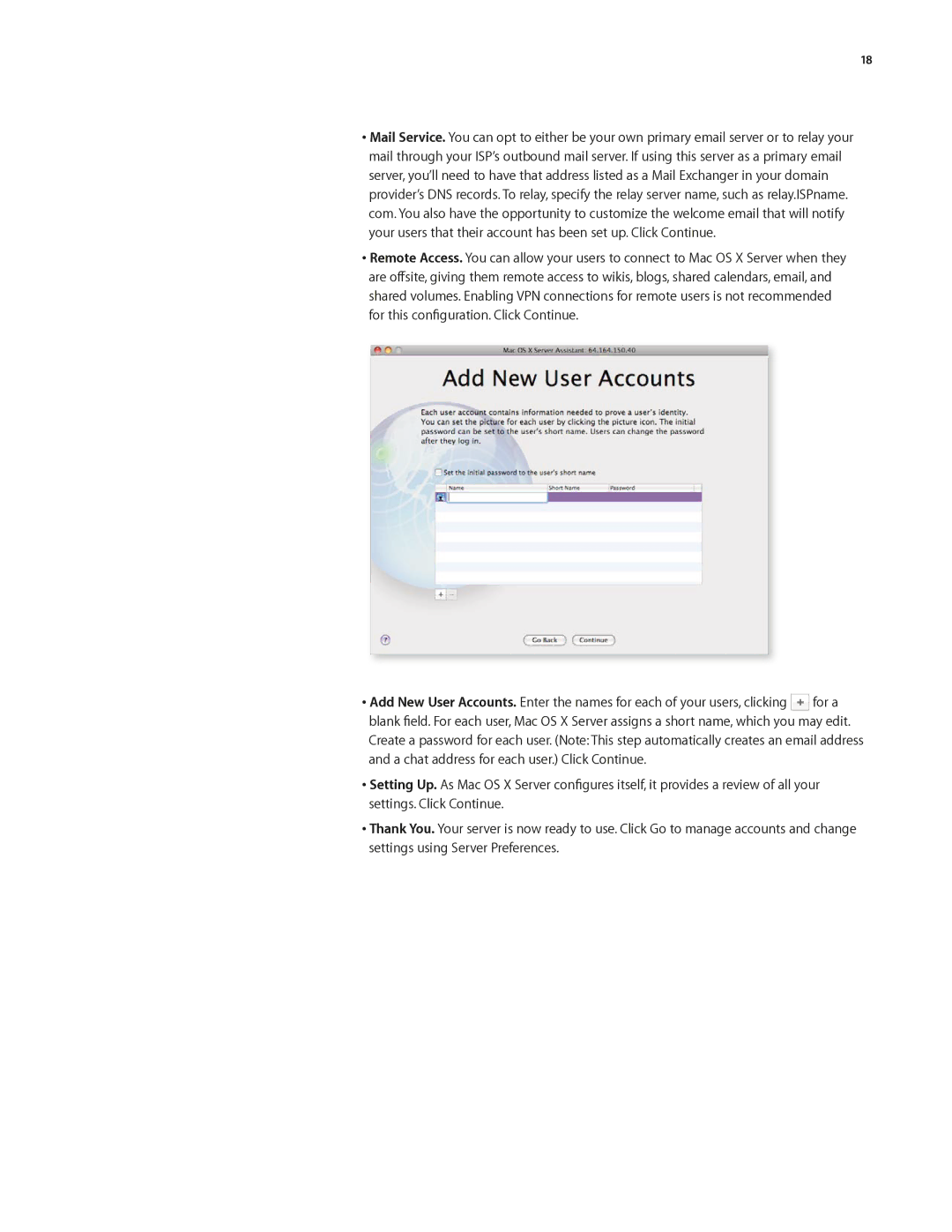
18
•Mail Service. You can opt to either be your own primary email server or to relay your mail through your ISP’s outbound mail server. If using this server as a primary email server, you’ll need to have that address listed as a Mail Exchanger in your domain provider’s DNS records. To relay, specify the relay server name, such as relay.ISPname. com. You also have the opportunity to customize the welcome email that will notify your users that their account has been set up. Click Continue.
•Remote Access. You can allow your users to connect to Mac OS X Server when they are offsite, giving them remote access to wikis, blogs, shared calendars, email, and shared volumes. Enabling VPN connections for remote users is not recommended for this configuration. Click Continue.
•Add New User Accounts. Enter the names for each of your users, clicking ![]() for a blank field. For each user, Mac OS X Server assigns a short name, which you may edit. Create a password for each user. (Note: This step automatically creates an email address and a chat address for each user.) Click Continue.
for a blank field. For each user, Mac OS X Server assigns a short name, which you may edit. Create a password for each user. (Note: This step automatically creates an email address and a chat address for each user.) Click Continue.
•Setting Up. As Mac OS X Server configures itself, it provides a review of all your settings. Click Continue.
•Thank You. Your server is now ready to use. Click Go to manage accounts and change settings using Server Preferences.
